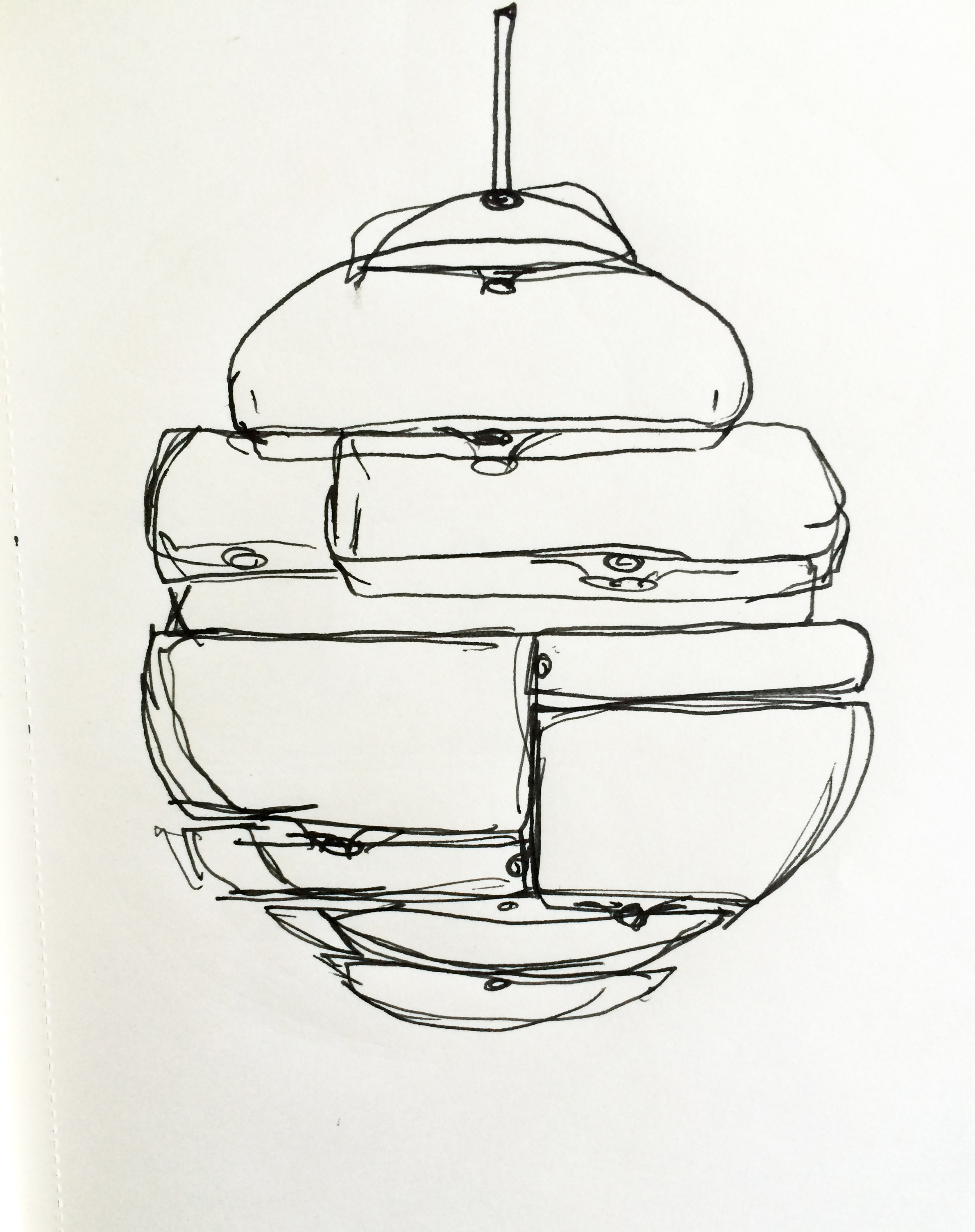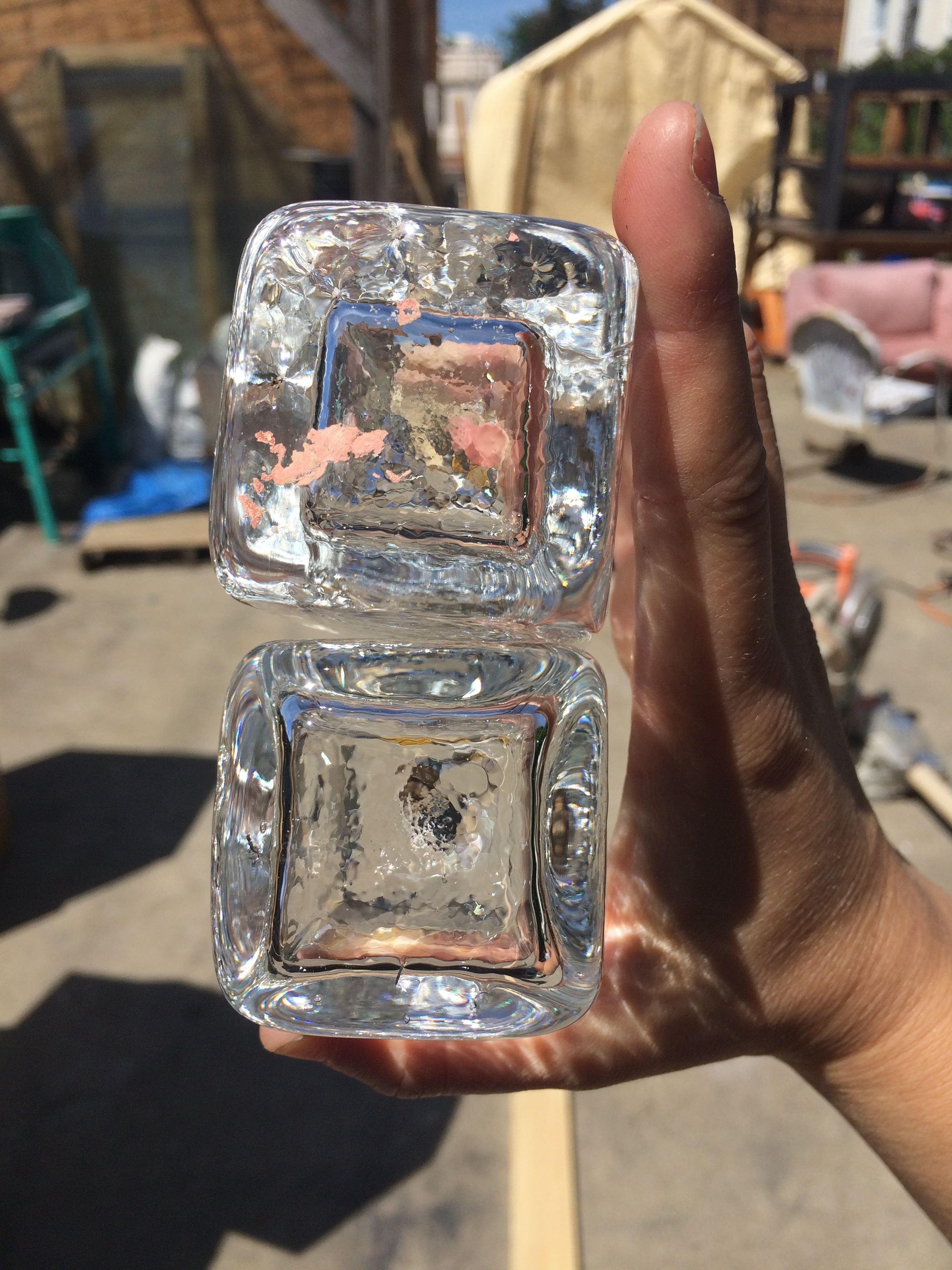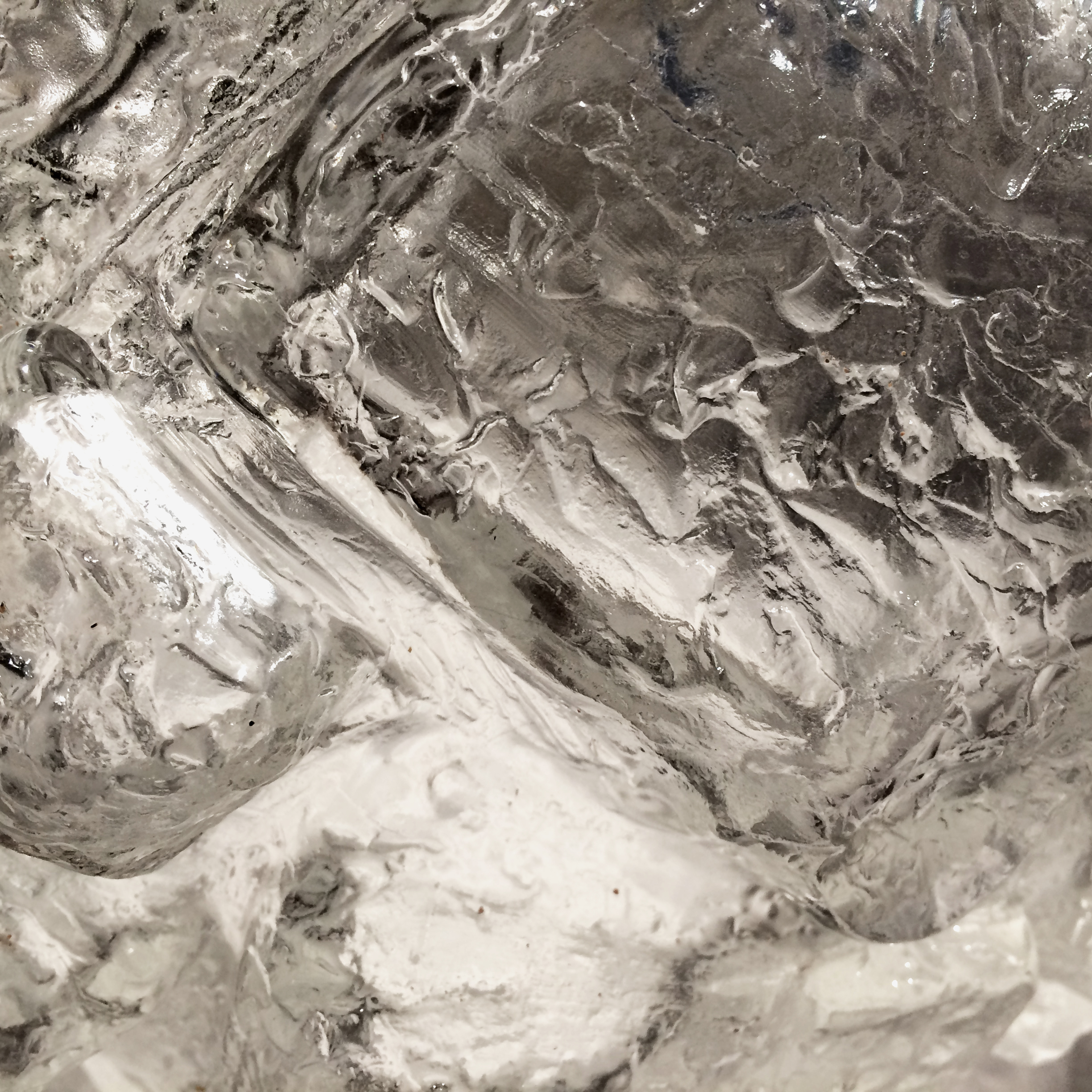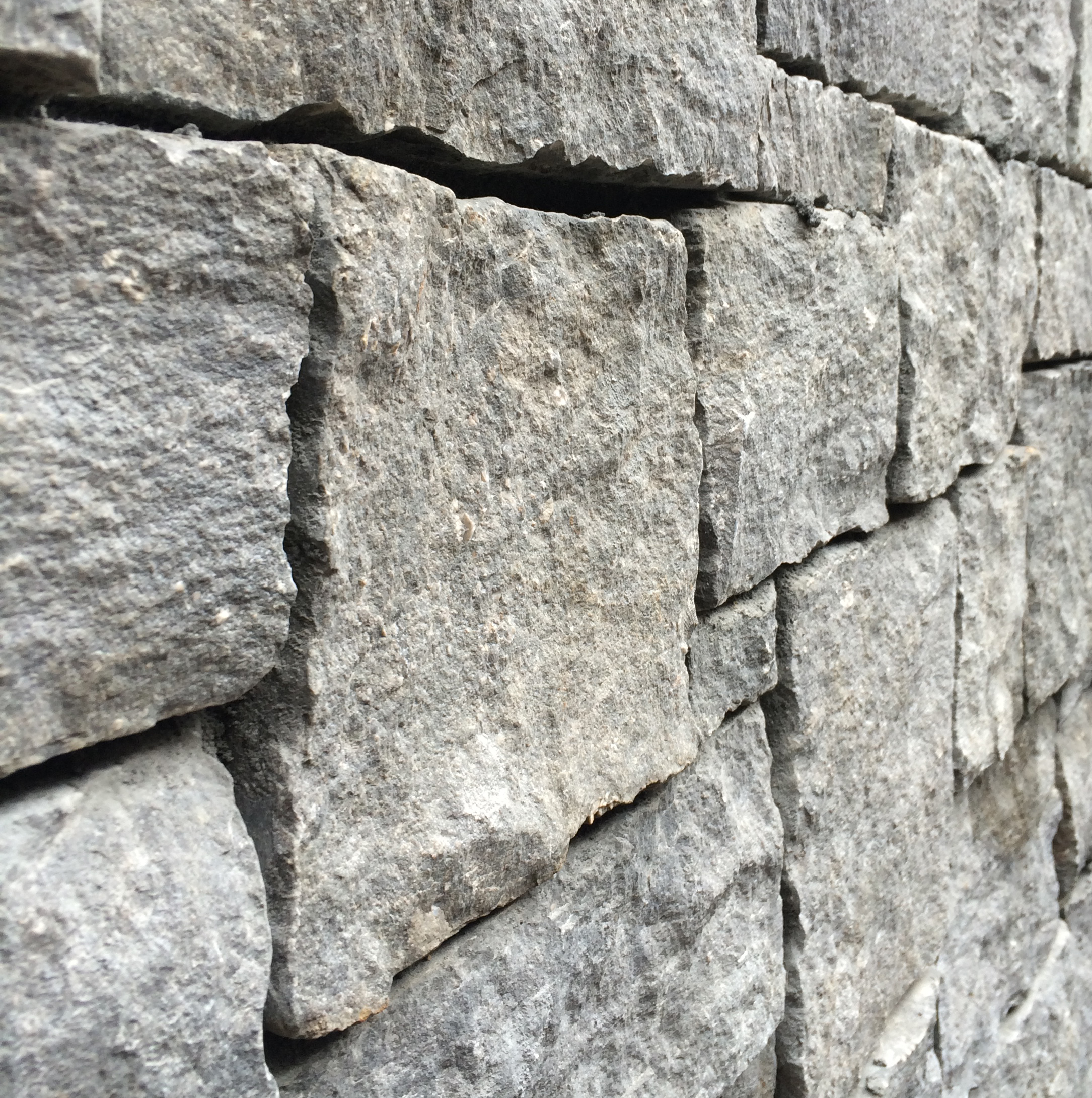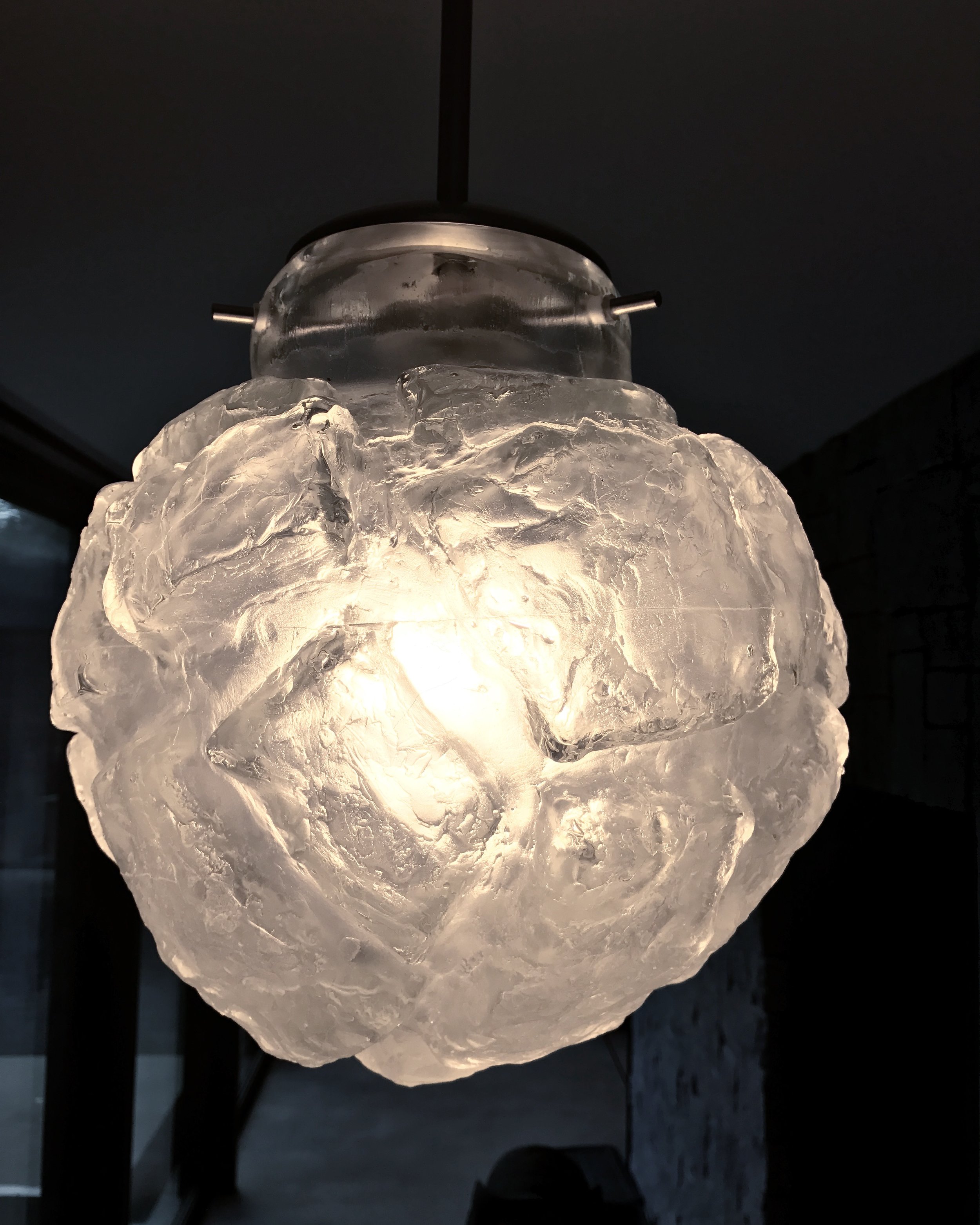Gallery
Description
The Atherton House is U-shaped. When you enter the front door you can either go straight past the aquarium to the kitchen and dining area, or turn left down a long hallway that passes the offices on one side and a big courtyard with a Japanese Maple tree on the other. This corridor is referred to as the gallery because it has a museum-like quality and is lined with massive pivoting glass walls that double as doors. The illuminated sculpture I created for this space is situated at the intersection point between this hallway and the one leading to the master bedroom.
First Sketches of the Location of the Light
During the Discovery Phase, I spent hours sitting by the pivoting glass walls watching and drawing the pearl-like raindrops hit the small moat outside. The smooth, hand-tinted concrete floor under me coupled with this transparent barrier to the natural elements outside produced the perfect, serene environment for reflecting deeply on the space. I was intrigued by the architect’s transposition of materials and architectural features typically found on the outside of a structure. The most prominent reversal in this space was the rough stone wall running the length of the offices. It felt natural to make a piece that played off the idea of translation, given the non-traditional materials selected.
Interior Stone Wall
Challenge
Conceptually, the challenge was to create a piece that was successful when viewed from both hallways, visually anchoring the intersection between them. It was also important that the piece relate to the materials and architectural features in its surroundings. We were faced with many challenges after deciding on a design direction that required embarking on a process that was new to me, time-consuming, and unforgiving. Many valuable lessons emerged from these struggles.
View from Beginning of the 'Gallery'
View from the Master Bedroom
Formal Iterations : Achieving the Stone Sphere
Once I focused on the stone wall as my inspiration and the design anchor of this piece, my process led me to the concept of a blown glass sphere that appeared to be made of stone blocks. Using square and rectangular extruded metal tube stock as blow-molds, I created glass ‘building blocks’ to construct the spherical form. Once I had these objects in my hands, I found joining them and integrating electrical components would require a significant, visible armature. Sticking with the goal of creating a glass-focused, weightless-feeling object, I pivoted to a hollow spherical form with a stone texture covering it.
Clay Model of Stone Sphere
Shop Sketch of 'Glass Building Blocks'
Shop Drawings, Molds, & 'Glass Blocks'
Expert Helpers and Hours Spent
My design philosophy is to develop the concept first and figure out how to make it later. For this piece I hired mold-making expert, Evan Kolker, to teach me and help make a one-time use plaster silica blow-mold from the wax Stonesphere sculpture I created. The entire process of making, blowing into, cooling, and breaking out one mold took about one month. In the pursuit of a perfect finished product, we ended up making and blowing into three molds. With troubleshooting, time for client feedback, and additional steps of metal and electrical fabrication, the whole piece took about eight months to finish.
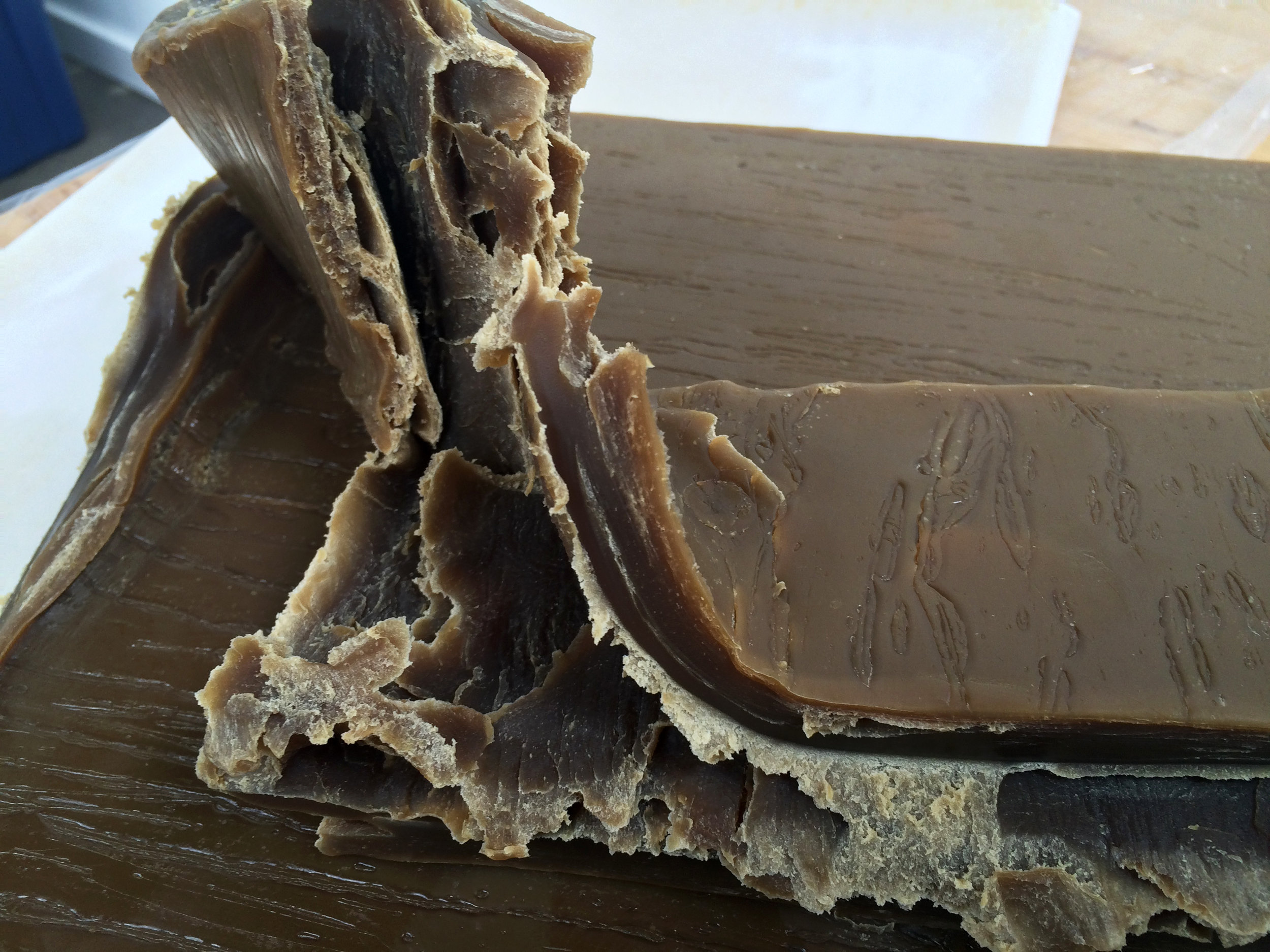
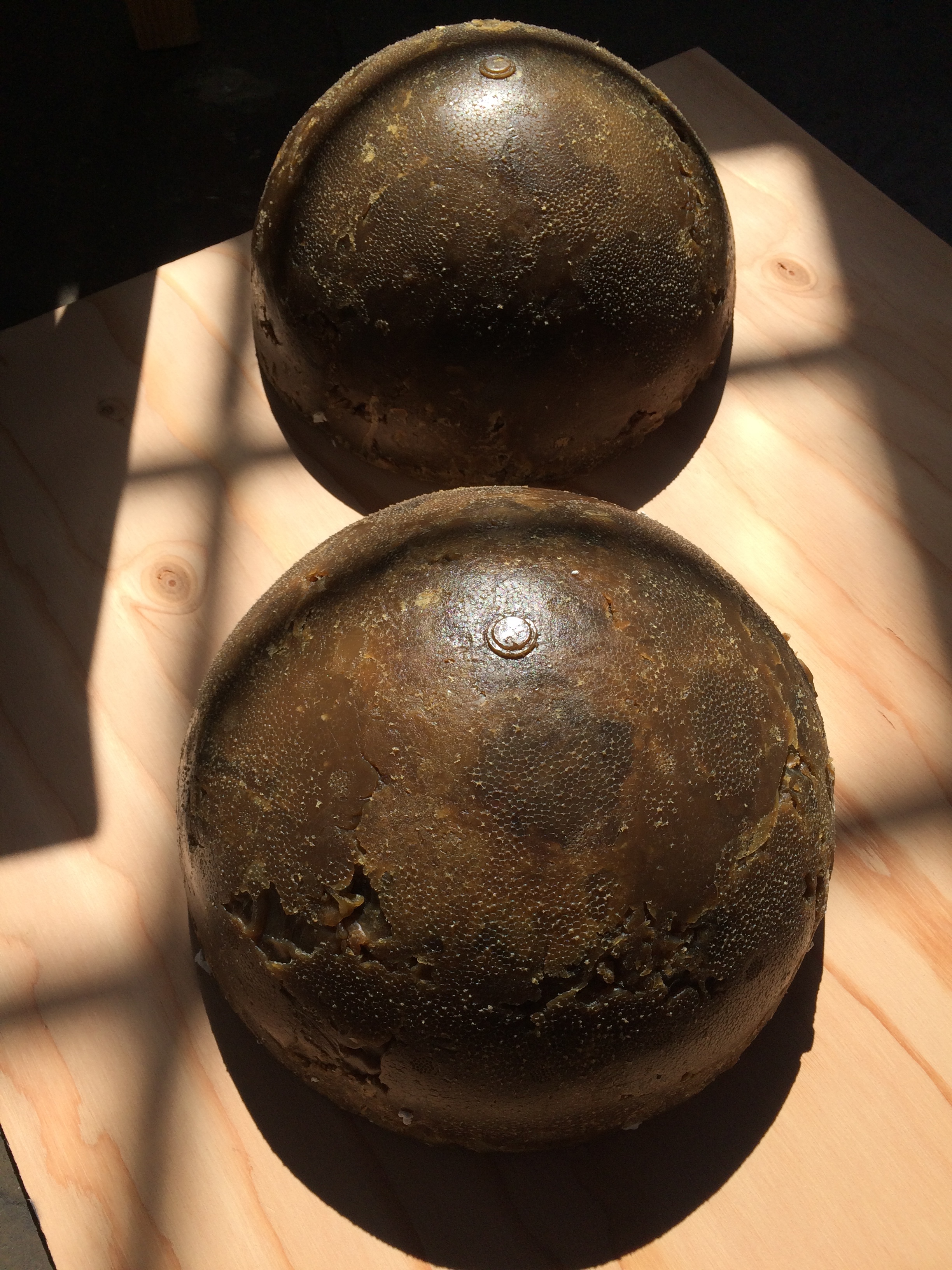
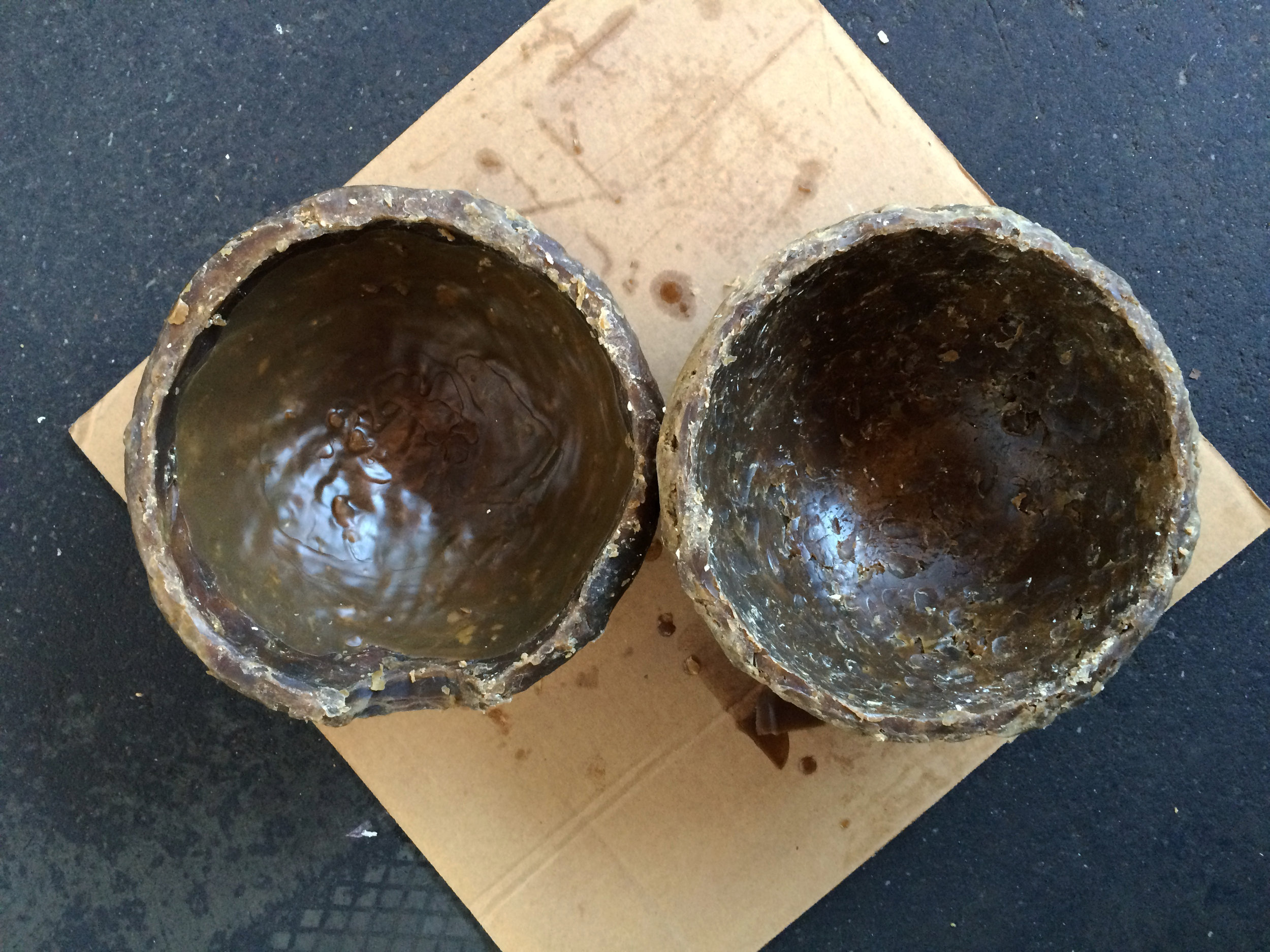
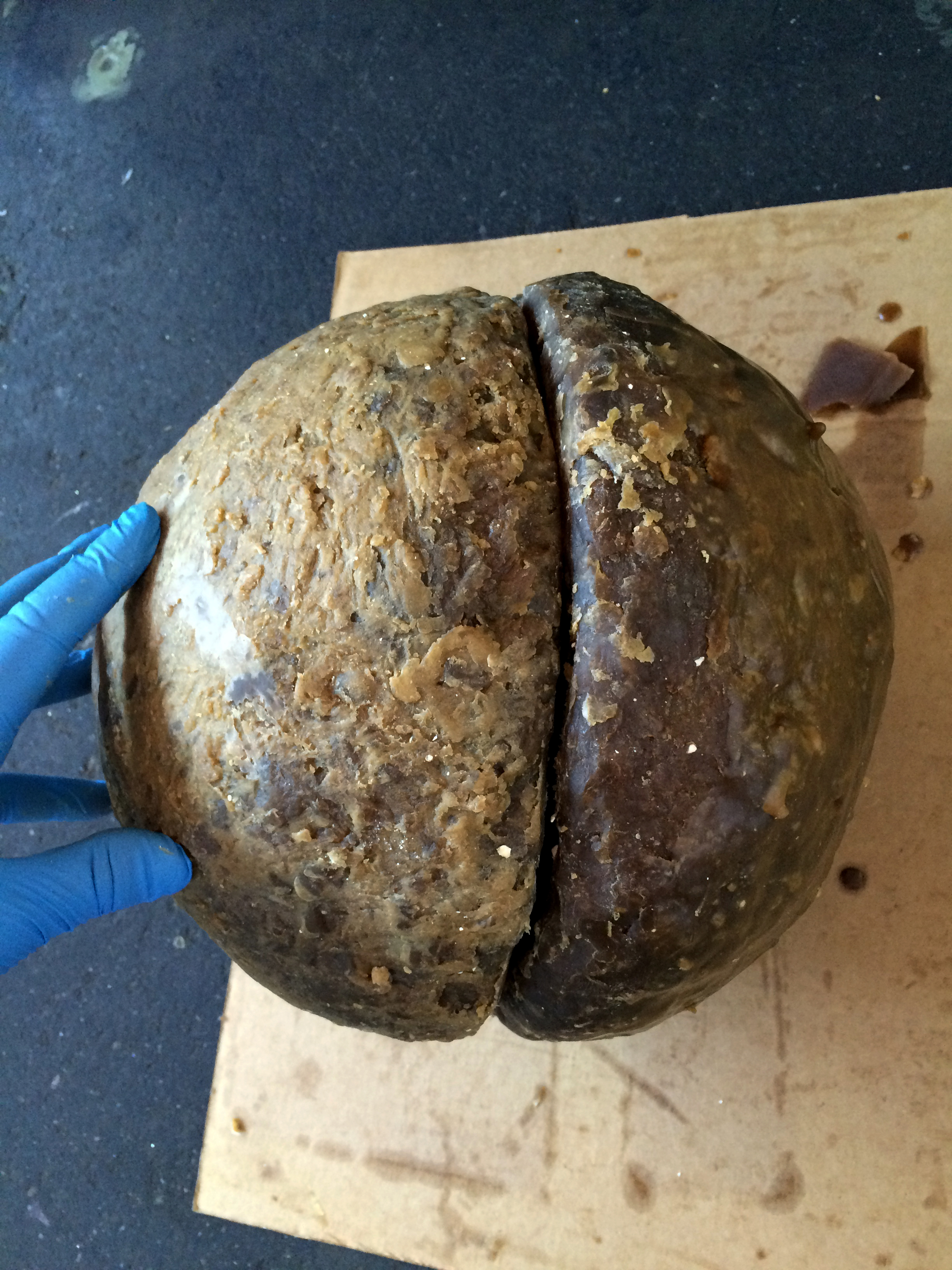
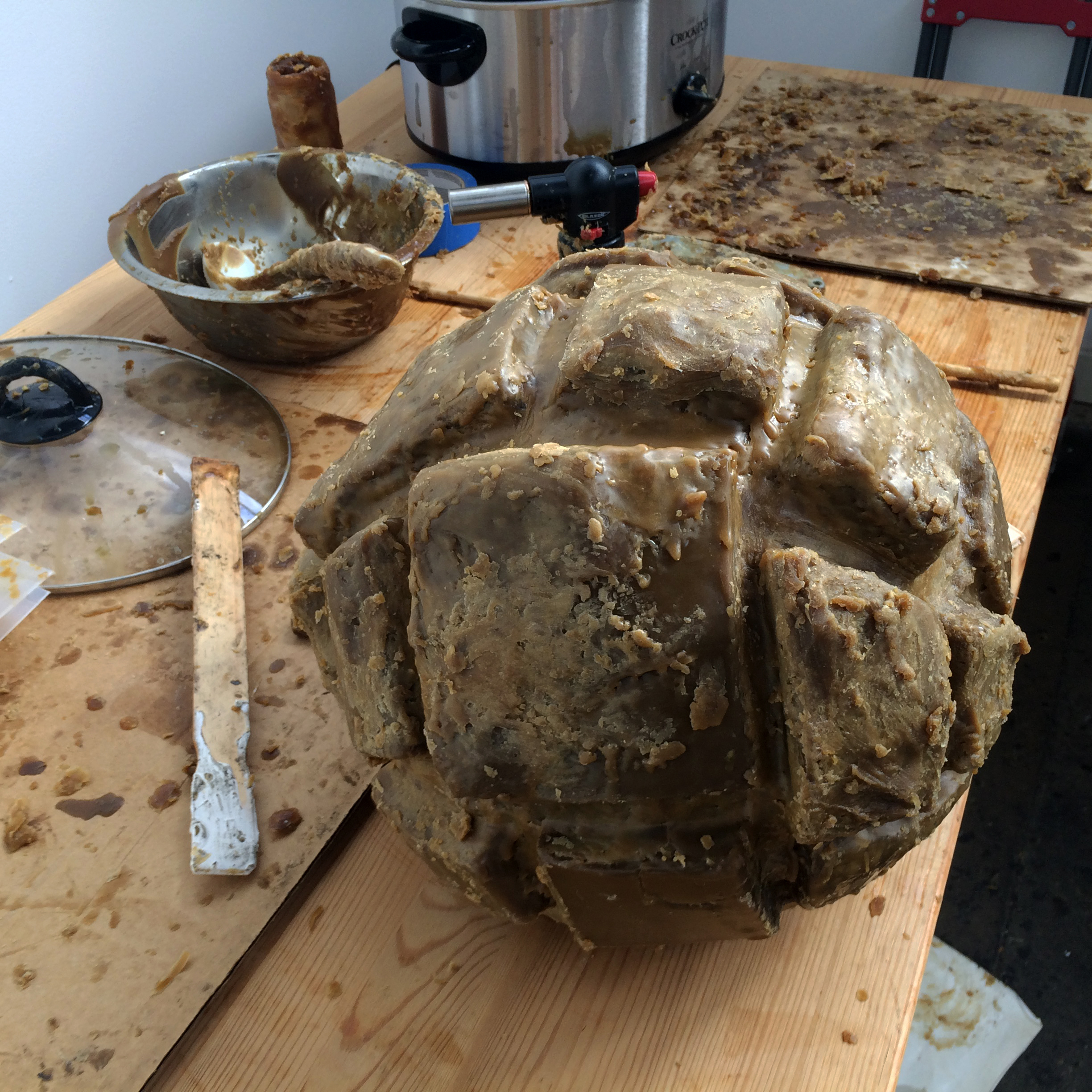
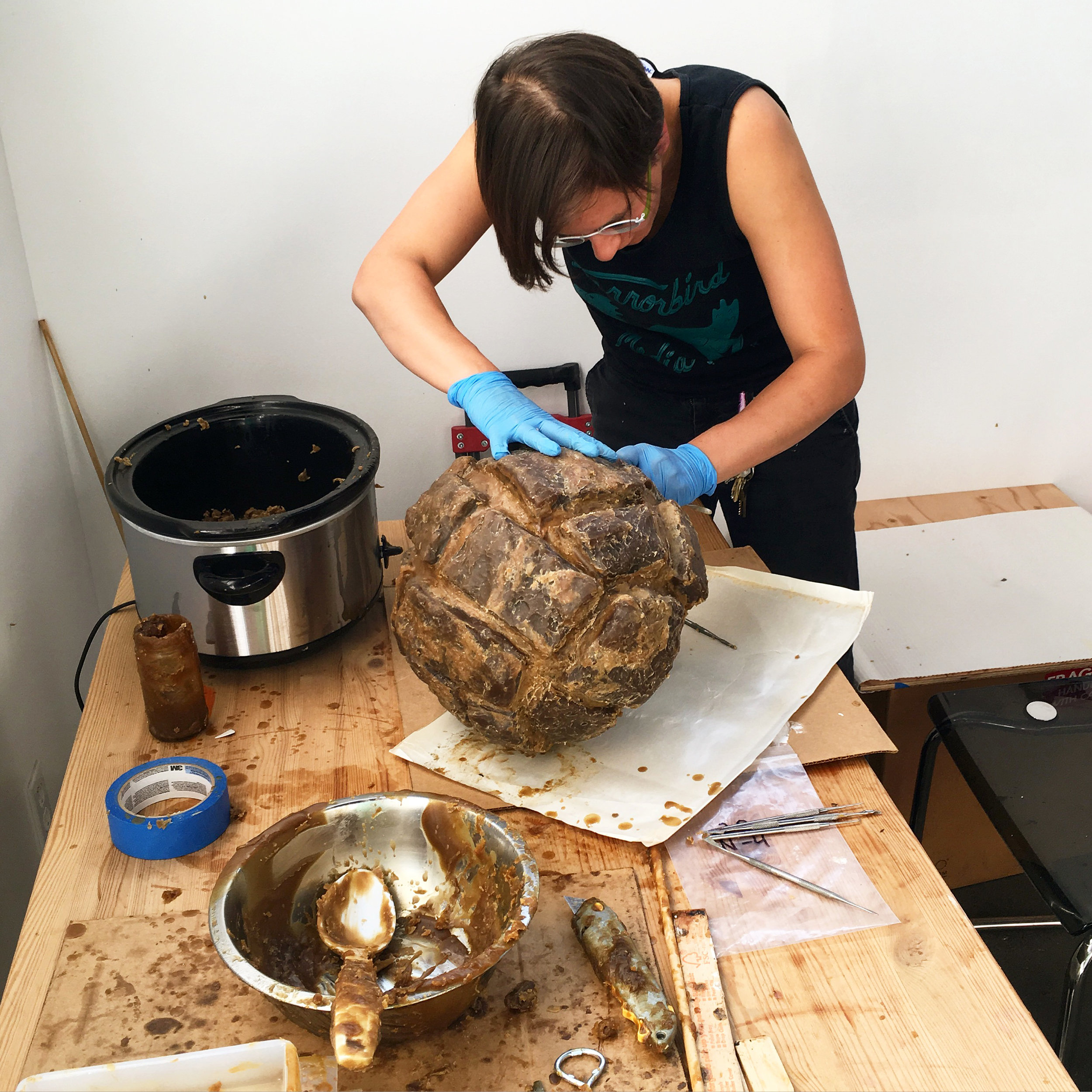
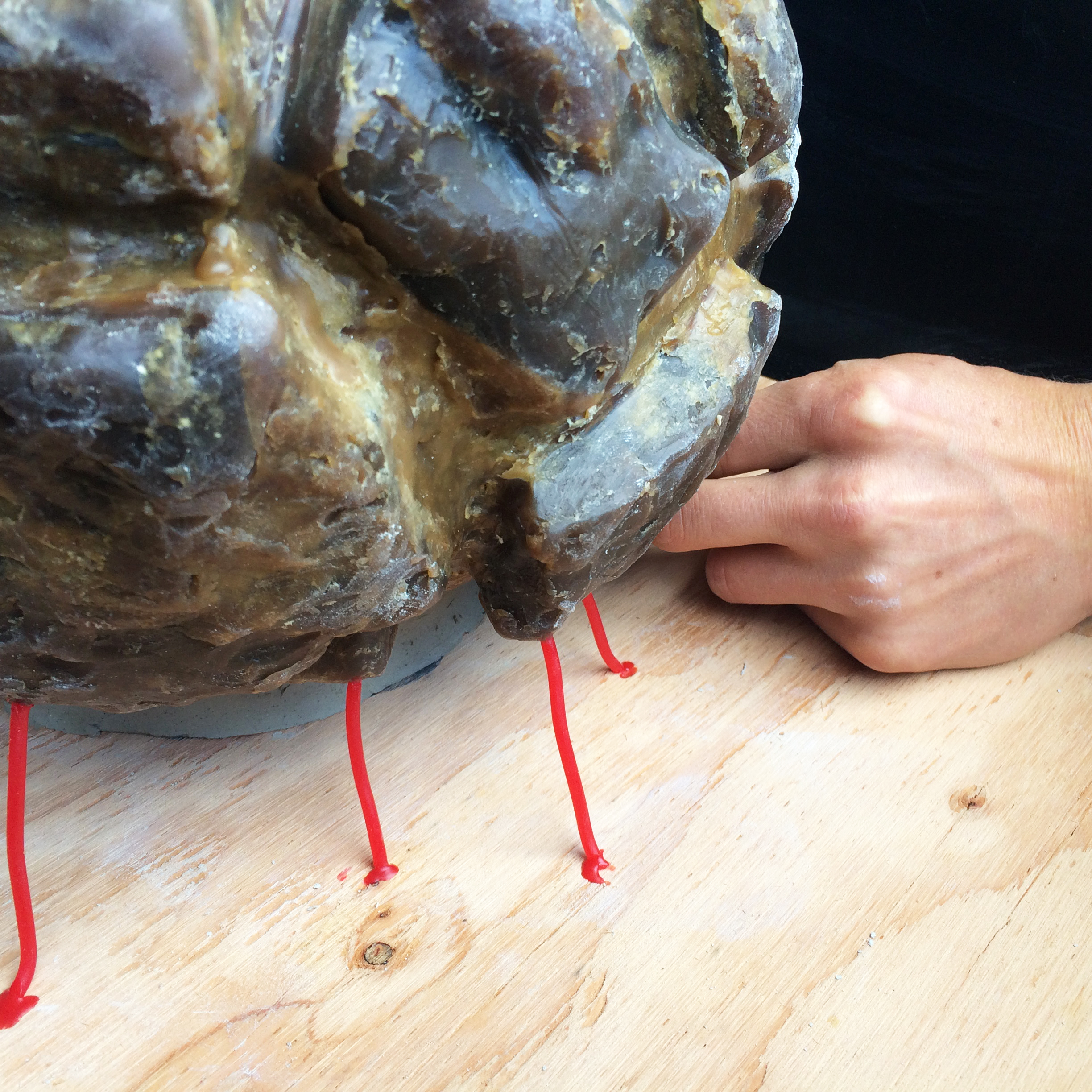
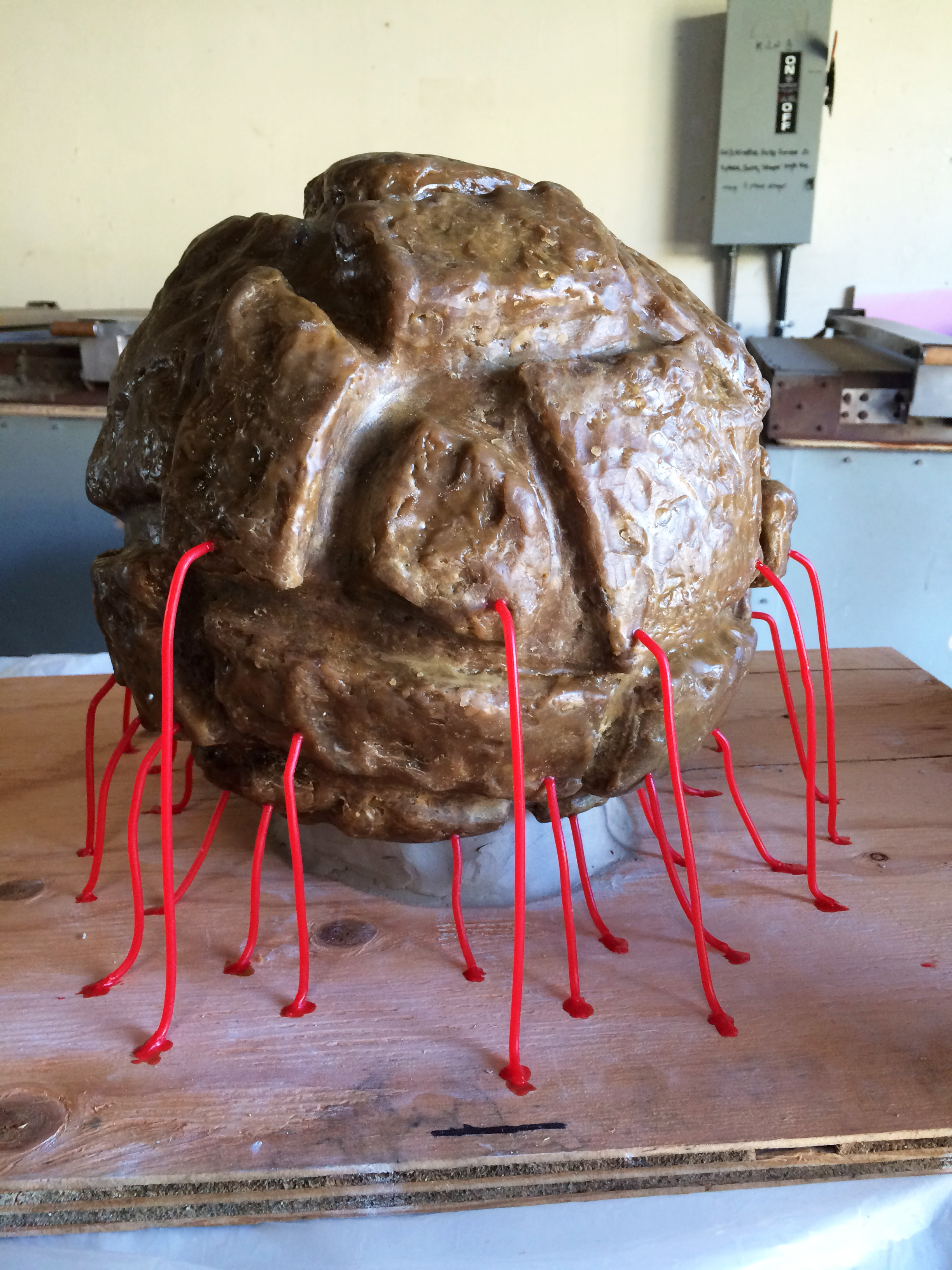
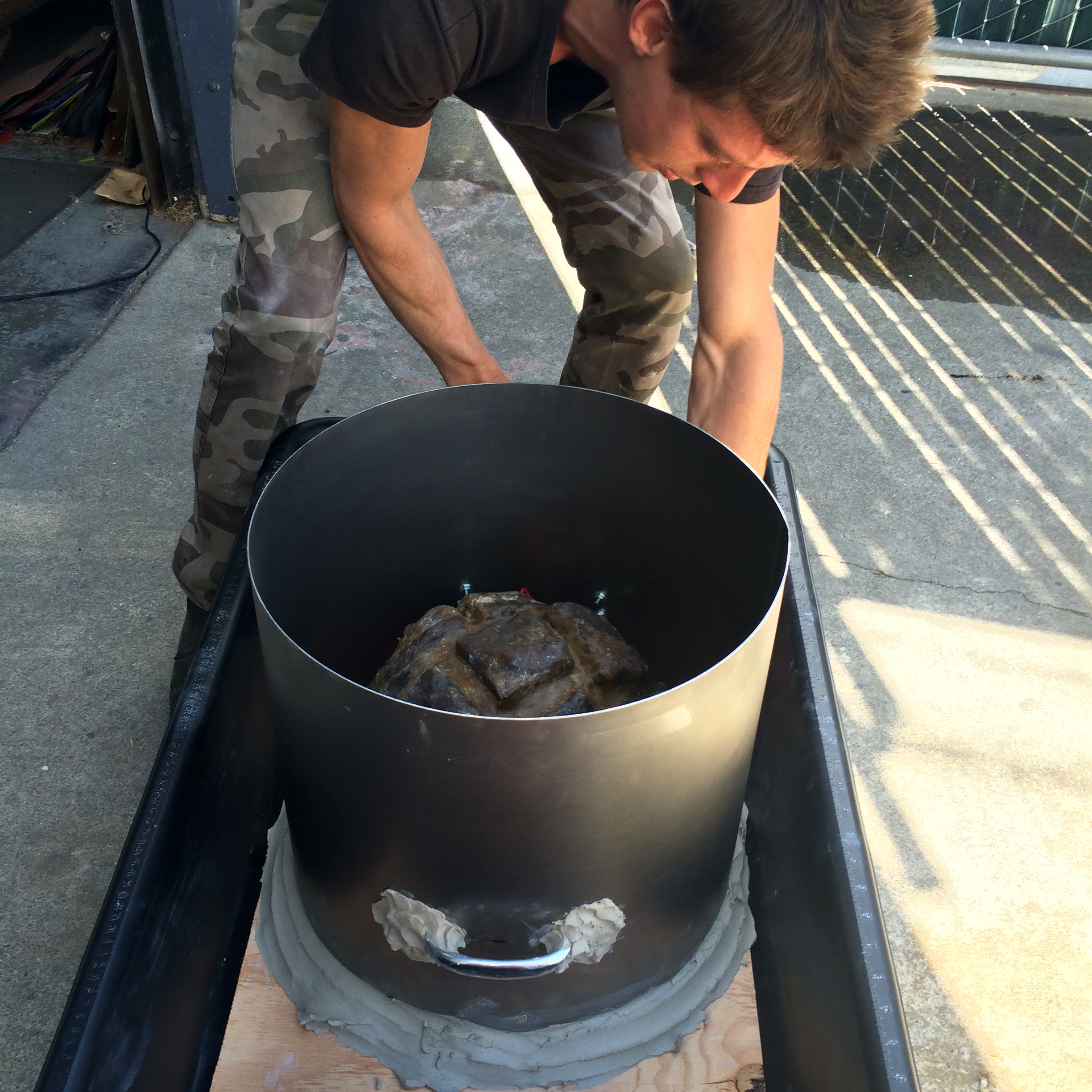
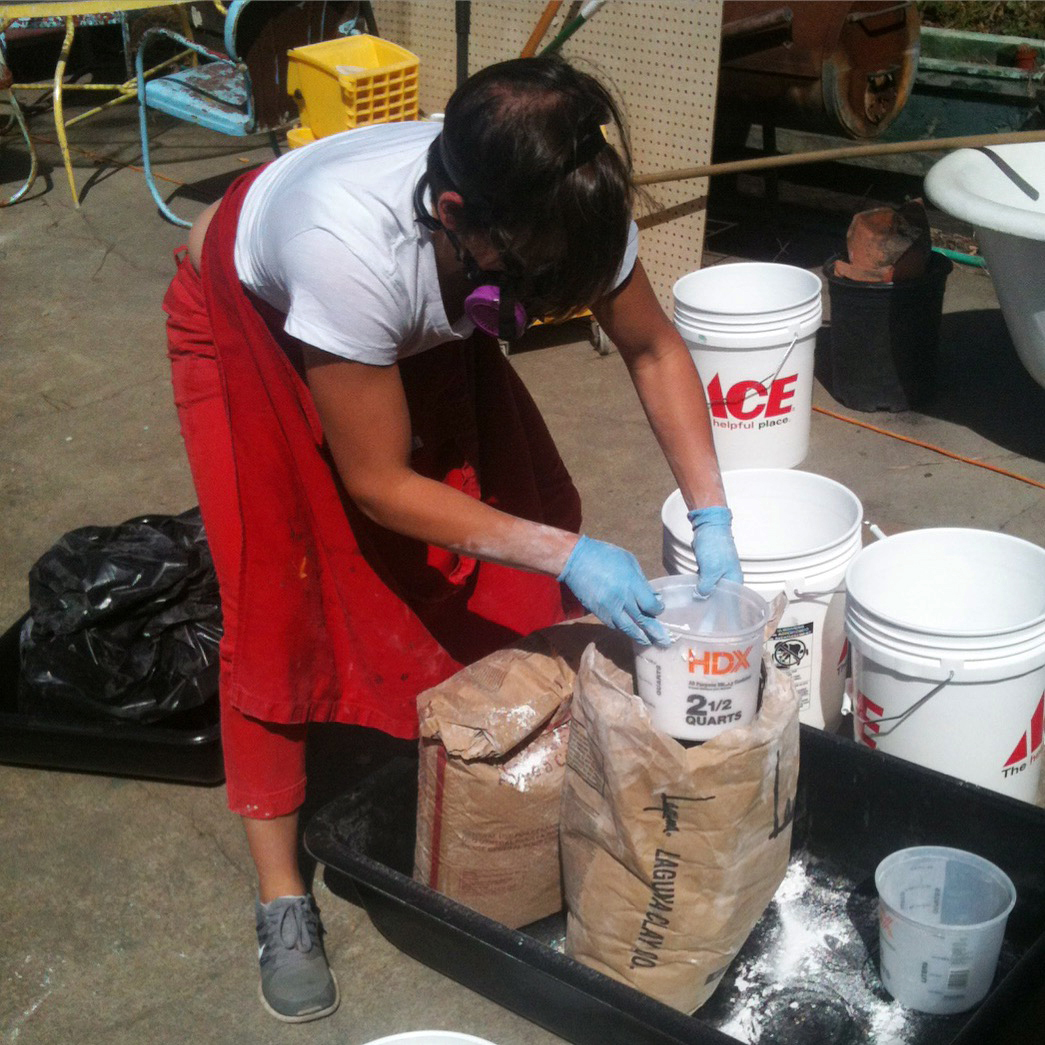
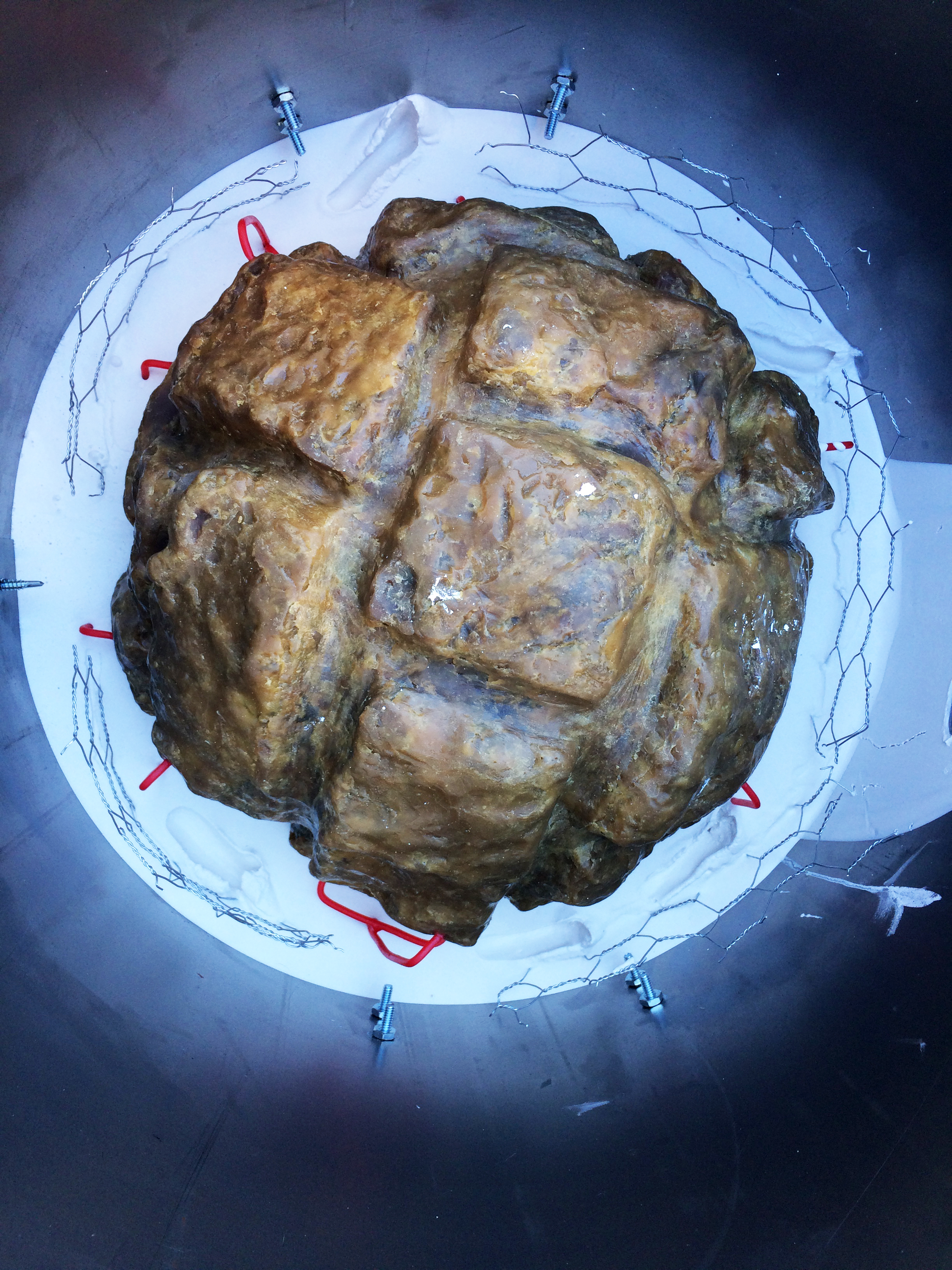
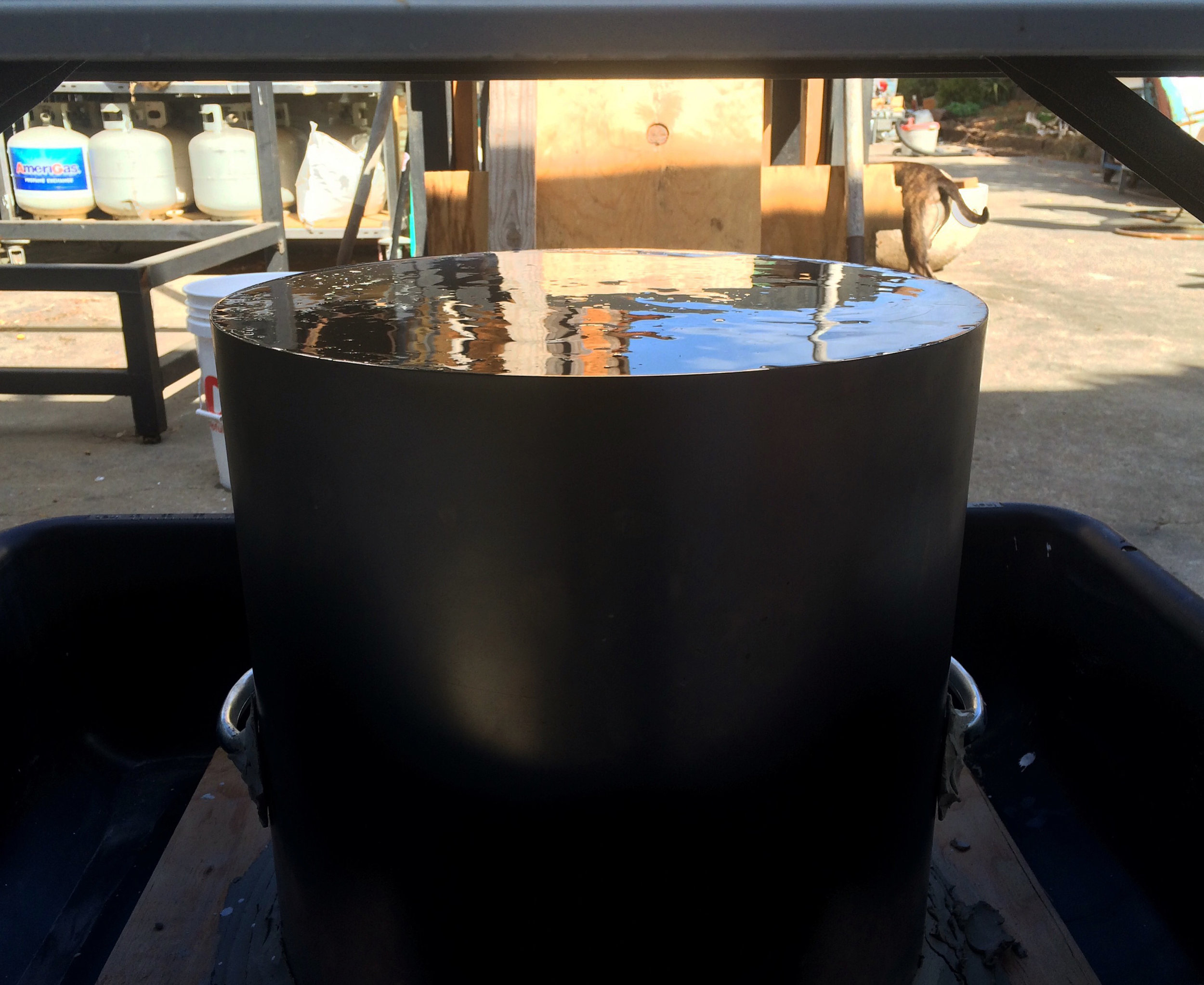
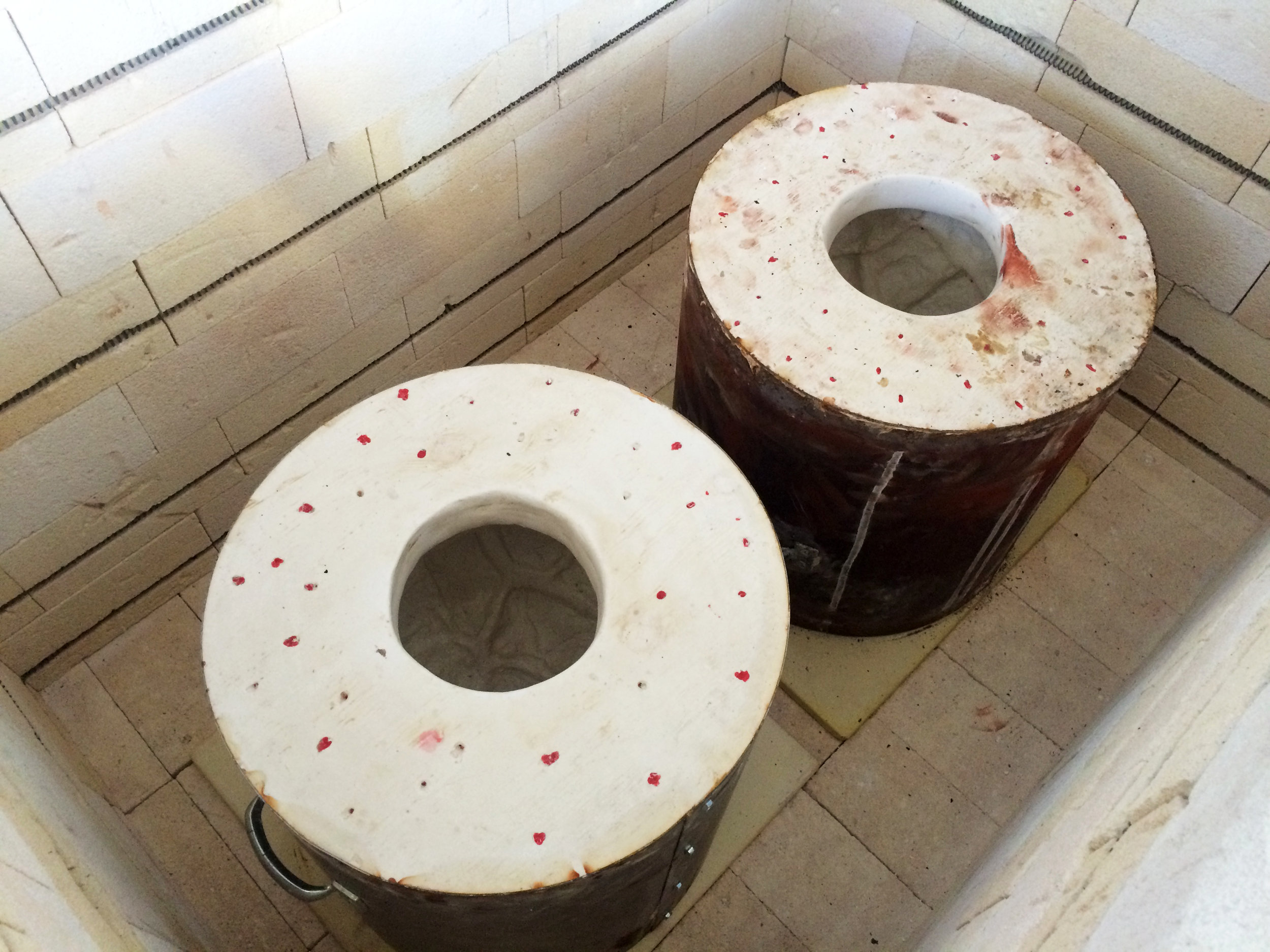
Lost Wax Process
We used a traditional lost wax casting process to create the piece. It began with me sculpting a wax positive of the final form, having a custom steel tube with handles fabricated, mixing and pouring a plaster silica mix in the space between the tube and the wax, and then steaming out the wax. Once mold was complete, it needed to heat up in the kiln for an entire week to ensure all the moisture was out of it. After that, a team of four (including myself) worked together to blow into the mold. Then we let the piece cool and release all the stress in the glass for another week in the kiln.
Wax Positive Detail
Glass Detail
Inspiration
Finsihed Pendant, Dusk







